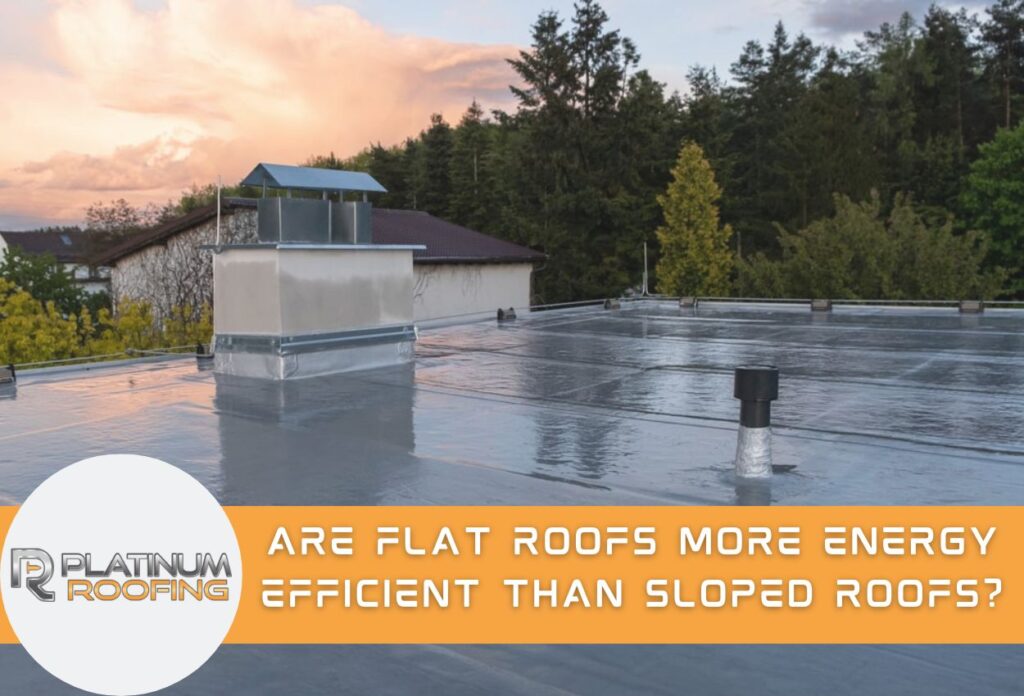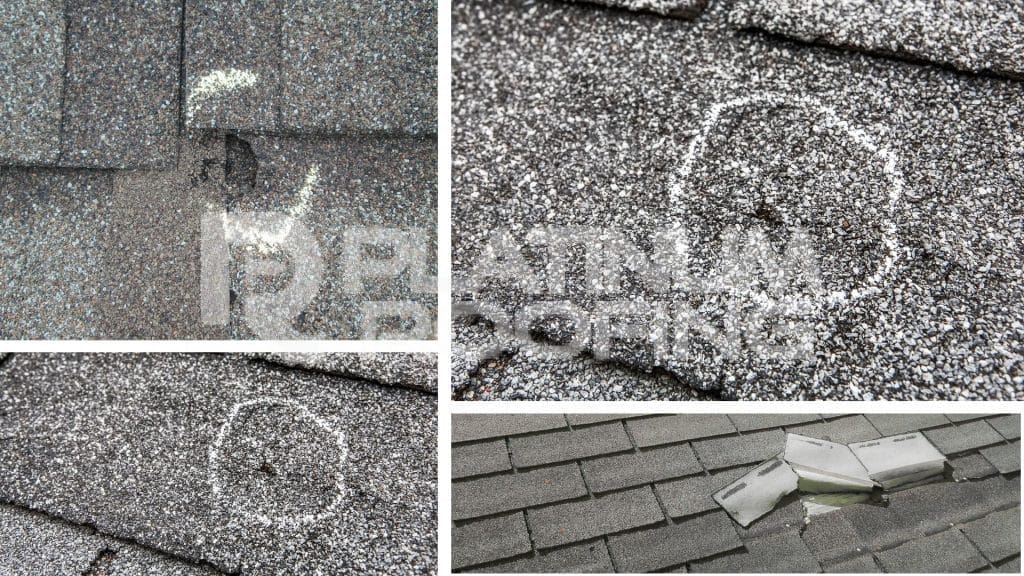Flat roofs have gained popularity in recent years, especially in commercial and modern residential architecture. This growing trend is not just about looks, it’s also driven by the potential for enhanced energy efficiency. As building owners and homeowners alike seek ways to reduce energy costs and minimize their environmental impact, the question arises: are flat roofs more energy efficient than sloped ones?
Flat roof structures offer many opportunities to improve a building’s thermal performance. Unlike traditional pitched roofs, flat roofs provide a large, uninterrupted surface area that can be optimized for energy conservation. This design allows for easier installation of insulation materials and energy-saving technologies such as cool roof coatings. These features can contribute to temperature regulation within the building, potentially leading to lower heating and cooling costs.
The energy efficiency potential of flat roofs extends beyond just insulation. Their design is perfect for the installation of solar panels, further enhancing a building’s eco-friendly profile. As we get into the benefits of flat roofs, it becomes clear why they are increasingly favored in energy-conscious construction and renovation projects.
Understanding the Impact of Flat Roofs on Energy Efficiency
Flat roofs have specific design qualities that contribute to energy efficiency in buildings. The large, unobstructed surface area of a flat roof provides an ideal platform for implementing various energy-saving measures. One key advantage is the ease of installing a continuous layer of insulation, which is important for maintaining consistent indoor temperatures and reducing energy consumption.
Insulation in flat roofs is a barrier against heat loss and gain, keeping indoor spaces cool in summer and warm in winter. This thermal regulation can lead to energy savings, as heating and cooling systems don’t have to work as hard to maintain comfortable temperatures. Additionally, flat roofs are excellent candidates for cool roof technology, which involves applying reflective coatings or materials that redirect sunlight and heat away from the building.
For commercial properties in Georgia and Alabama, where summer heat can be intense, energy-efficient flat roofs can make a significant difference in cooling costs. Roofing contractors in these areas often recommend flat roof solutions for businesses looking to improve their building’s energy performance. By combining proper insulation with cool roof technology, flat roofs can outperform sloped roofs in terms of energy efficiency, especially in warmer climates.
Cool Roof Technology: Maximizing Energy Efficiency on Flat Surfaces
Cool roof technology is a game-changer for flat roofs, especially in hot climates like Georgia and Alabama. This innovative approach involves applying specially designed coatings or materials to the roof surface to improve its reflective properties. These cool roof coatings are engineered to reflect more sunlight, and therefore absorb less heat, than standard roofing materials, reducing the roof’s surface temperature.
The benefits of cool roof technology for energy conservation in hot climates are worth considering. By reflecting a higher percentage of solar radiation, cool roofs help maintain lower indoor temperatures, reducing the need for air conditioning and lowering overall energy consumption. This can lead to noticeable savings for building owners, specifically in commercial structures with large roof areas. Additionally, cool roofs contribute to reducing the urban heat island effect, improving comfort in urban areas during hot summer months.
For businesses in Georgia and Alabama looking to improve their energy efficiency, cool roof coatings are a practical and effective solution. Local roofing contractors can apply these specialized coatings to existing flat roofs or incorporate cool roofing materials in new construction projects, providing long-term energy-saving benefits. The combination of a flat roof’s inherent efficiency with cool roof technology creates an optimal energy-saving solution for commercial buildings in warm southern climates.
Heat Reflection and Absorption: Flat Roofs vs. Sloped Roofs
When it comes to energy efficiency, understanding the way a roof handles heat is crucial. Flat roofs and sloped roofs interact with solar radiation differently, impacting a building’s overall thermal performance. Flat roofs typically have a larger surface area exposed to direct sunlight, which can lead to increased heat absorption. However, this characteristic also presents opportunities for enhanced heat management strategies.
The color and material of a roof play major roles in its heat reflection and absorption properties. Light-colored or reflective surfaces on flat roofs can dramatically reduce heat gain by reflecting a higher percentage of solar radiation. This is especially beneficial in warm climates like Georgia and Alabama, where air conditioning costs can be substantial. In contrast, sloped roofs often use traditional materials like asphalt shingles, which tend to absorb more heat.
Flat roofs also offer advantages in terms of applying specialized coatings and materials. Cool roof technologies, such as reflective membranes or coatings, are easier to install and maintain on flat surfaces. These products can enhance a flat roof’s ability to reflect heat, potentially surpassing the energy efficiency of sloped roofs. For building owners in the southeast looking to improve energy performance, a local roofing contractor can suggest the best strategies to lower energy bills.
How Ventilation and Air Flow Optimize Flat Roof Energy Efficiency
Proper ventilation and air flow are crucial parts of maximizing the energy efficiency of flat roof systems. While flat roofs are inherently well-suited for energy conservation, incorporating effective ventilation can further enhance their performance. Good air circulation helps regulate temperature and moisture levels, contributing to a more comfortable and energy-efficient building environment.
One key strategy for improving air flow in flat roofs is the installation of roof vents. These can include edge vents, internal air channels, or mechanical ventilation systems. These features allow hot air to escape, reducing the heat load on the building and decreasing the workload on air conditioning systems. In humid states like Georgia and Alabama, ventilation also prevents moisture from collecting in the attic space, which can lead to insulation degradation and reduced energy efficiency over time.
Another effective approach is the creation of an air gap between the roof deck and insulation layer. This design feature promotes air movement, helping to dissipate heat and moisture. For building owners in the southeast considering flat roof installations or upgrades, experienced roofing contractors can give advice on the most effective ventilation strategies for their specific climate and building needs, ensuring optimal energy performance year-round.
Cost-Benefit Analysis: Long-Term Energy Savings of Flat Roofs
If you’re considering installing a flat roof, it’s important to think about a cost-benefit analysis. In Georgia and Alabama, where cooling costs can be high, the energy-saving potential of flat roofs becomes even more appealing.
Factors to consider when evaluating the cost-effectiveness of flat roofs include the quality of insulation, the use of reflective materials, and the potential for incorporating additional energy-saving technologies. High-performance insulation and cool roof coatings can reduce heat gain, leading to lower energy bills during hot southern summers. Additionally, the large surface area of flat roofs provides a perfect place for solar panels, offering further energy savings and potential return on investment.
For commercial building owners in the southeast, roofing contractors can suggest the most cost-effective flat roof solutions. These professionals can offer recommendations based on local climate conditions and specific building requirements, ensuring that your chosen flat roof system maximizes energy efficiency and delivers long-term savings.
Discover the Long-Term Savings with Platinum Roofing’s Energy-Efficient Flat Roofs
Are you considering a flat roof for its energy efficiency? At Platinum Roofing, we specialize in energy-efficient commercial roofing options that not only reduce your energy bills but also enhance your building’s performance. Flat roofs, with their ability to incorporate cool roof technology, provide substantial energy savings. This technology reflects more sunlight and absorbs less heat than traditional materials, leading to a cooler building and reduced air conditioning costs.
Our flat roof insulation options minimize heat loss during colder months, maintaining a comfortable indoor temperature year-round. Choosing the right color and material can further optimize your roof’s energy performance, making flat roofs an ideal choice for buildings in Georgia and Alabama.
Ready to cut down on your energy expenses and make a wise investment in your property’s future? Call Platinum Roofing today at (229) 561-3107 to learn more about our flat roofing solutions.






